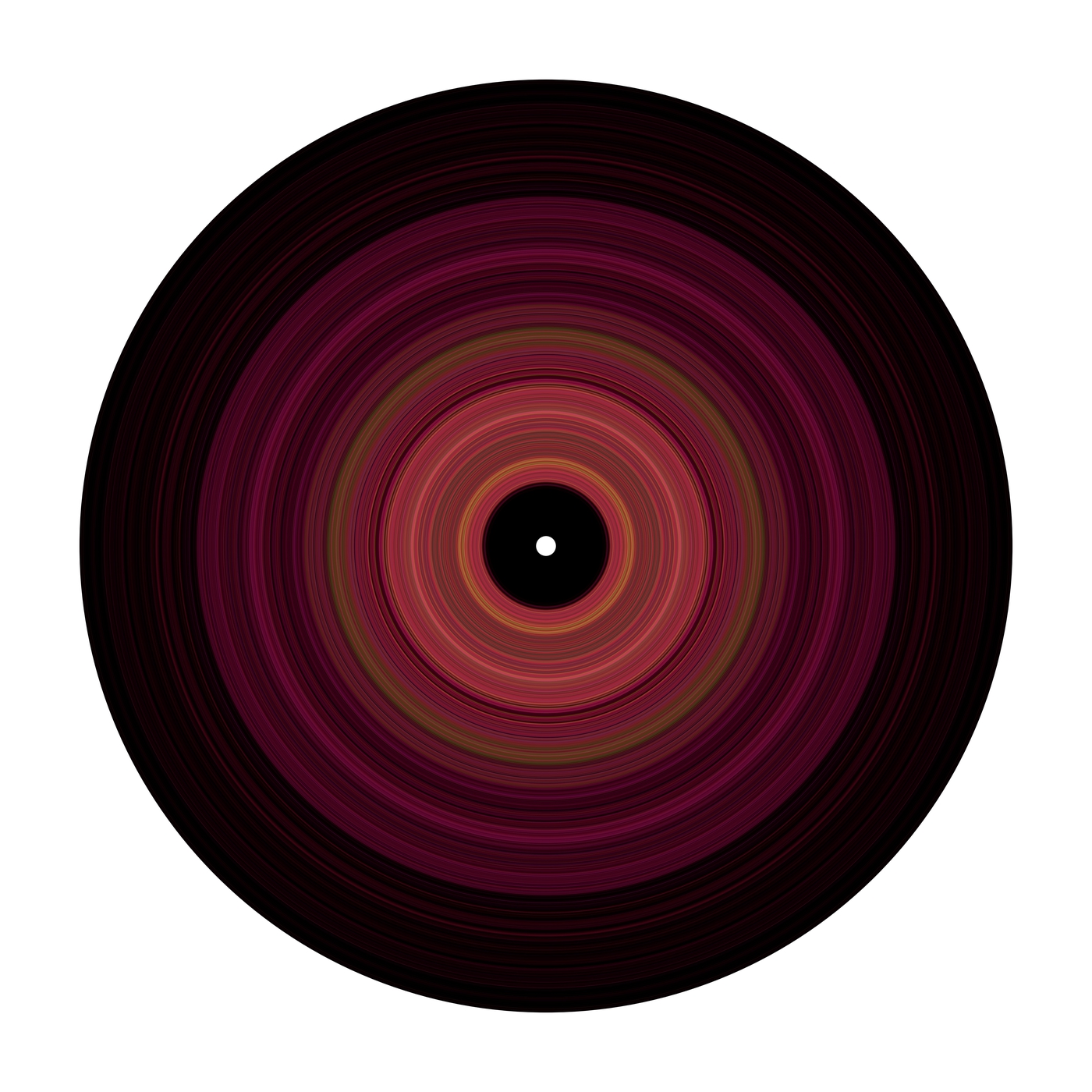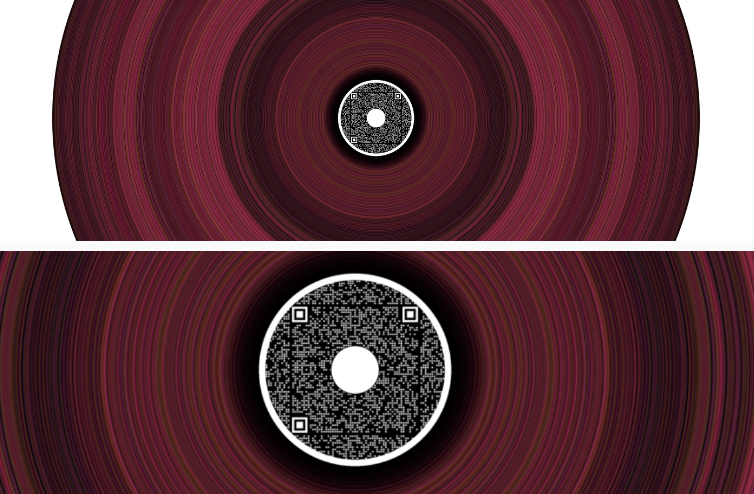Visual Music Records
Inspiration
A while ago I had come across this product that was a display of the average color of each frame in a movie shown as vertical lines. The idea was that, as you moved from left to right, you’d be scrubbing through the movie in time and seeing how the colors and mood change as the film progresses. In certain films, you would be able to even point out some of your favorite scenes.
I wanted to explore the idea of being able to do something adjacent to this for music. Music has always been present in my life, and so I figured, with my experience in image processing, acoustic signal processing, and my inability to deny my curiosities, why not? I also figured that, if I could make this process reproducible and visually appealing, I could potentially have a product on my hands.
Best Laid Plans
After noodling on the idea for a bit, I came up with specific goals I wanted to accomplish so that I could make sure the end result, should I get there, would match what I had imagined.
- Most importantly, I wanted the result to be visually appealing; I was out to make art and what good is it if no one wants to look at it.
- I wanted the project to be reproducible and idempotent; meaning, for a given song, I want the process to yield the same result.
- I wanted the approach to use signal processing techniques; meaning, the result should be dependent on the various acoustic properties of the song.
- By using a signal processing approach, the desire for each result to be unique was also covered.
- As I thought more about the product aspect, I found that I wanted there to be a way for the beholder to have a means to listen to the song from which the result was derived.
With all this (and more) in mind, I figured I was good to get started.
From Sound to Color
The immediate challenge I faced was how in the world do I go about converting sound to color?
Furthermore, music is dynamic. Trying to figure out ways to capture the dynamic essence of each song is instrumental (I see what I did there) in being able to convey its personality through a different medium. So, I started to think about what goes into making a song its own, and which of those has the potential to aid me on this journey (don’t stop, believ…). I landed on three main musical attributes and a vision of their influence on the final product.
The tempo of a song can set the mood of a song, so I decided to use it to influence the underlying hue of each song. Think of that adrenaline inducing, thunderous double base backed tune that helps you rage-cope after a run-in with that self-checkout with an attitude or that sweet, smooth jazz that makes you just want to vibe out.
The amplitude of the song conveys the energy throughout the song and can change dramatically. Think of the classics like Led Zeppelin’s Stairway to Heaven; starting out mellow only to crescendo into a timeless guitar riff and powerful vocals. Or The Isley Brothers’ Shout; encouraging the crowd to take it a little bit softer now just before pumping up the energy to get everyone a little bit louder now as your newly minted brother-in-law tries to convince a bridesmaid that their hips do not, in fact, lie. So, to capture the intensity throughout a song, I decided to use it to influence the song’s color saturation.
And finally, the pitch of a song. The pitch changes all the time in songs and, in combination with the other attributes, tells a tale of emotional expression. Think of any Adele song, using pitch elevation to accentuate an emotional intensity. Or Queen’s Bohemian Rhapsody; using shifts in pitch to enhance the storytelling right before you attempt your best operatic solo in the mirror and notice you forgot to floss.
Sum of its Parts
After a long time of experimentation, ideation, and frustration, I was able to put something together that I think accomplishes the goals I set out for myself. This is a visual record disk that shows a signature of the song, in time, going from the outside towards the center; just like an actual vinyl record would be played.
 |
|---|
| Stairway to Heaven - Led Zeppelin |
In the Stairway to Heaven sample above, we can see the song starting out dim, along the edge of the record. As the song plays, and we move inward towards the center pinhole, we see the aforementioned crescendo taking place towards the end of the song. We see a common ‘root’ color as influenced by the tempo (bpm) of the song being swayed into other colors by the pitch changes within the song.
The samples below are from the following songs from top to bottom, respectively: Kate Bush’s Running up that Hill, Thrice’s Star at the Sun, and Journey’s Don’t Stop Believin’. In each of them, we can see a tempo hue, the rise and fall of energy, and alterations in pitch.

One Thing Remains … Well, Two
First, I mentioned that I wanted a way for the viewer to be able to interact with the piece; more specifically, I want a means to unobtrusively allow the user to experience the song that they are seeing. This is where some previous, exploratory work, I had done comes into play (weak, go home!). I’m referring to my attempt at making circular QR codes. Combining this with the record image, allows for a record label to be added that would, upon scan, brings the viewer to a web application (that I created - maybe another post later?) that directs the user to listen to the song on their preferred platform. Here’s what that looks like:

Go on, give it a scan (there goes my aws bill).
Last Thing
Naming a thing, is tough. I’ve gone with VizualVibes Records and I’m hoping to take this somewhere, but there’s much to learn
about the business and production side of things. For I am a humble ADHD brain with many interests, and prolonged
pursuits are difficult.
Thanks
Thank you for getting this far, I appreciate you for your time and I hope you found this project interesting. Feel free to reach out with any questions or thoughts.